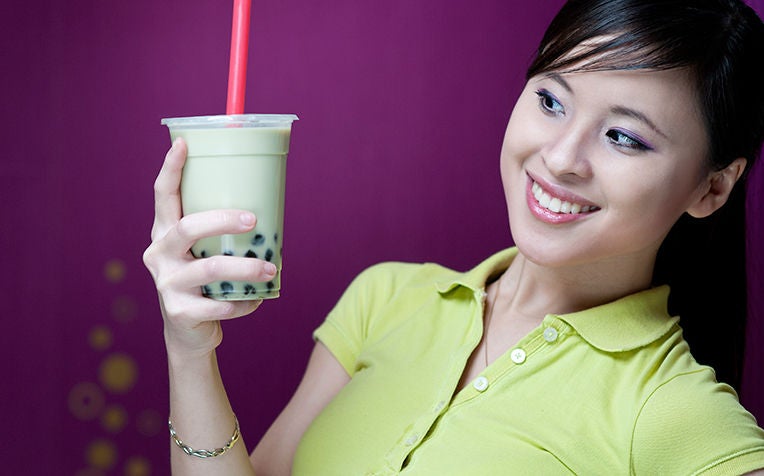
Bubble tea has health benefits, but it may not be a good choice for those watching their weight or sugar intake.
Bubble tea: Good or bad?
Despite getting a bad press in the past, bubble tea remains a popular beverage in Singapore and judging from the long queues outside bubble tea outlets, it appears to be everybody’s favourite thirst quencher. But how healthy, really, is drinking bubble tea?
The original bubble tea, also called pearl milk tea, is basically brewed black tea or green tea mixed with milk, sugar and chewy tapioca pearls, and usually served cold with ice.
Fruit-flavoured bubble tea is also available in an assortment of flavours such as mango, lychee, strawberry, honeydew and green apple. Fruit purees (natural or sweetened), flavoured syrups or fresh fruits are added to the base tea for the fruity taste.Antioxidants in tea
Drinking black tea or green tea every day is beneficial to health because it is a rich source of a group of antioxidants called polyphenols.
Polyphenols have anti-oxidant, anti-inflammatory and anti-carcinogenic properties. They can help to protect the body against free radicals that cause cellular damage and inflammation in the body.
Know what’s added to your bubble tea
“Drinking unsweetened black or green tea daily has health benefits, but drinking pearl milk tea regularly may not be a healthy choice if you are watching your weight or controlling your calorie and sugar intakes,” says Ms Wong Hui Xin, Dietitian, Department of Dietetics and the LIFE Centre (Lifestyle Enhancement & Fitness Improvement) at Singapore General Hospital (SGH), a member of the SingHealth group.
Indeed, there is more to the natural sweetness of black and green tea in your cup of bubble tea or pearl milk tea. What is usually added:
- Flavoured syrup, sweeteners or sweetened fruit purees (refined sugars)
- Tapioca pearls (carbohydrates): Some pearls made in Taiwan were found a few years back to contain a harmful additive, maleic acid. These contaminated pearls were immediately withdrawn from sale for the safety of consumers
- Non-dairy creamer (sugars and artery clogging trans-fat in the form of partially hydrogenated vegetable oil)
According to Singapore’s Health Promotion Board (HPB), a cup of bubble tea, with milk and tapioca pearls contains about 335 calories. The pearls represent about one third of the calories. Two cups of milk bubble tea with pearls are about a third of the average recommended intake of 1,800-2,000 calories for healthy individuals.
A 500ml cup of brown sugar boba milk is also believed to contain as much as 92g of sugar, about three times more than the amount of sugar in a 320ml can of Coca-Cola.
If you are overweight or if you have diabetes, you may want to limit your bubble tea cravings to an occasional treat because each cup of tea can contain as much as six teaspoons of sugar.
How to make your bubble tea a healthier drink
Some healthy tips for you when ordering bubble tea or pearl milk tea:
- Ask for less or no sugar (including less flavoured syrup and sweetened fruit purees).
- Ask for fresh milk (preferably, low-fat or skimmed) as a substitute for non-dairy creamers.
- Ask for plain bubble tea without the chewy tapioca pearls or the milk to reduce the calories.
Need help adopting a better lifestyle? The LIFE Centre at Singapore General Hospital (SGH) has a multidisciplinary team of experts who can provide you with guidance on weight management, exercise and diet.
Ref: S13
Contributed by

















 Get it on Google Play
Get it on Google Play